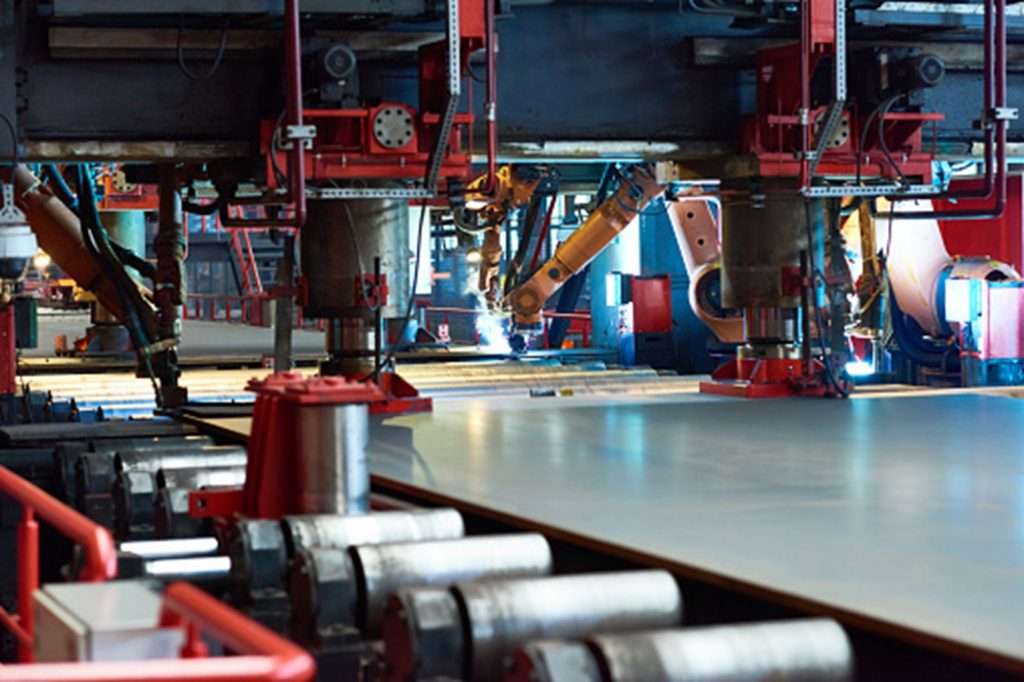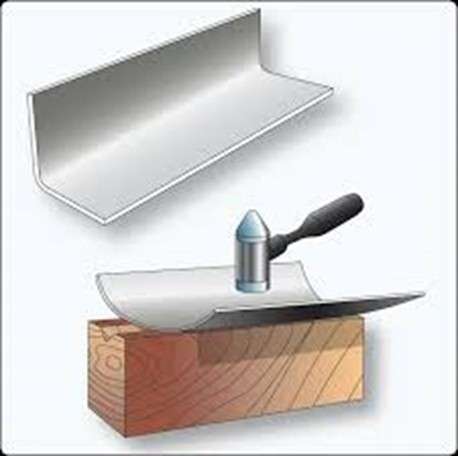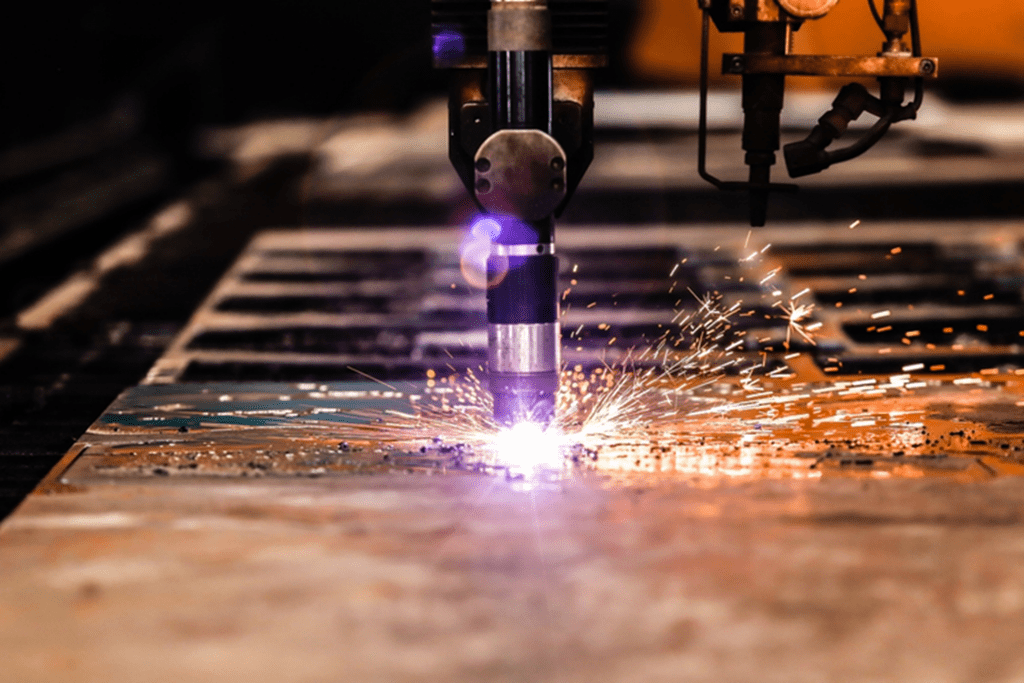
Sheet metal processing
Various metal parts are used in familiar products that support our lives, such as automobiles, home appliances, furniture, and personal computers.
In particular, thin plate-shaped metal parts are manufactured through many processes such as cutting, punching, bending, and welding.
In this article, we will explain the types of sheet metal processing that are applied to a wide range of products and the flow of general sheet metal processing.
Sheet metal processing is similar to press processing in that it processes metal plates, but it has the advantage of being cheaper than press processing, which uses special dies.
Types of sheet metal processing
Sheet metal processing can be roughly divided into two types: manual sheet metal processing, which is performed manually, and machine sheet metal processing, which uses processing machines such as press machines.
In the processing process, “hand sheet metal” is processed only by the power of the worker using tools such as hammers. On the other hand, “mechanical sheet metal” uses a machine to apply pressure to a metal plate to deform it.
We will introduce the merits and demerits of each processing method of “hand sheet metal” and “mechanical sheet metal”.
Types of sheet metal processing
- hand sheet metal
- machine sheet metal
About hand sheet metal

Manual sheet metal bending
“Hand sheet metal” is a manual processing technique, and it is a craftsmanship that can be used for precise processing such as processing precision parts and repairing automobiles, as well as crafts and ornaments.
By cutting sheet metal with special scissors or hitting it with a hammer, we perform delicate processing that is difficult with machines.
Since each process is performed manually, we are able to respond to complete build-to-order manufacturing, such as small-lot production of only a few pieces or prototypes.
On the other hand, these processes, which require a high degree of skill by craftsmen, have disadvantages such as “higher product unit price”, “time required for processing”, and “not suitable for mass production”.
There are techniques such as “hammering sheet metal” and “bending sheet metal” in hand sheet metal.
Sheet metal processing in automobiles
There are many needs for sheet metal processing for exterior repairs of automobiles. (Sheet metal processing performed at a repair shop is simply called “sheet metal.”)
High processing skills of “hand sheet metal” by craftsmen are indispensable for panel dents and surface repair work.
Hammered sheet metal
Hammering sheet metal is a technique of shaping sheet metal while beating it with a hammer.
It is known as a one-of-a-kind processing technique by skilled technicians that cannot be reproduced by machines (even if it can be reproduced, the cost does not add up), such as daily necessities such as snow flat pots, crafts, and parts for special vehicles.
Bending sheet metal
Bending sheet metal is a technique of forming using general-purpose machines such as bending machines.
While using a machine, the sheet metal is bent slowly in multiple batches, relying on the experience and feeling of the operator rather than automation.
It is used for special bending that cannot be bent by machine sheet metal, and for processing one-of-a-kind products.
About machine sheet metal

Laser cutting process
“Machining sheet metal” is a processing technique that uses a mold to form, and is characterized by its ability to efficiently process a large amount of sheet metal while maintaining a constant quality.
In recent years, due to the progress of automation with press machines, sheet metal is often referred to as machine sheet metal.
Sheet metal processing:
Sheet metal processing is a highly mechanized field. Metal plates are cut with a laser cut machine, drilled with a turret punch press, bent, and welded where necessary. Now automated and managed
The number one advantage of machine sheet metal is the low cost. Mass production processing, it is premised on processing several thousand pieces or more, and the processing cost per piece is remarkably low.
In machine sheet metal processing, general-purpose dies are used in combination, so the cost of dies can be reduced compared to general press processing. On the other hand, there is also a disadvantage in that it is difficult to handle complicated shapes.
The general flow of sheet metal processing
- Drawing development
- Cutting and punching
- Pretreatment
- Bending
- Welding
- Finishing and surface processing
1. Drawing development
Unfold the drawing to cut the sheet metal to the finished dimensions.
Sheet metal stretches in dimensions during the bending process. Therefore, when developing drawings, it is necessary to consider the elongation that occurs during processing.
In order to finish it to the required dimensions after processing, we will develop the drawing after calculating the elongation value.
Elongation example
If a 1000mm sheet metal is bent at a right angle, it will stretch by 501mm + 501mm, depending on the thickness, rather than 500mm + 500mm. Therefore, when bending a plate into an L shape with a side of 500mm square, it is necessary to subtract 1mm of error.
2. Cutting and punching
Cut the sheet metal to shape and punch holes if necessary. Machine sheet metal processing is performed by combining machines such as shearing machines, laser processing machines, and turret punch presses.
3. Pretreatment (deburring, tapping)
Before bending, the sheet metal section is processed. Burrs generated on the cut surface are processed (demurring) for later processes, and screw holes are processed (tapped) as necessary.
4. Bending
This is the process of bending the cut sheet metal according to the drawing.
In machine sheet metal processing, machines such as press brakes and benders are used.
5. Welding
Sheet metals are joined together by arc welding, etc.
When welding sheet metal, the thinner the material, the more likely it is that distortion will occur.
| fusion welding | A method of joining members is by heating them at a temperature higher than their melting points, such as arc welding. |
| brazing welding | A method of joining is by melting a metal (solder, silver solder, etc.) that has a lower melting point than the member. |
| pressure welding | A method of joining members by applying mechanical pressure |
General types of welding
6. Finishing and surface processing
It is a process to finish by repairing irregularities and scratches on the surface that occurred at the processing stage. Surface treatments such as painting and plating are also performed in this process.
What is sheet metal processing? Summary
In this article, we have explained the types and advantages of sheet metal processing, including general processes. Home appliances, which use a lot of sheet metal, are increasingly being designed, so there is a need for more complex and precise sheet metal processing.
I hope that this article will allow you to learn about sheet metal processing.




0 Comments